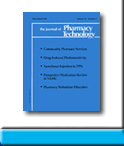 |
 |
CASE–CONTROL STUDY
COMPARING DROPERIDOL PLUS DIPHENHYDRAMINE WITH CONVENTIONAL TREATMENT IN
HYPEREMESIS GRAVIDARUM
Ema Ferreira,
Jean-François BussiÈres, Virginie Turcotte, Louise Duperron, and
GeneviÈve Ouellet
To request full article click here.
BACKGROUND: In 1998, a protocol consisting of droperidol/diphenhydramine combination was established at Hospital Sainte-Justine to treat hyperemesis gravidarum.
OBJECTIVE: To compare the efficacy of the droperidol/diphenhydramine combination with other conventional treatments used before implementation of this protocol in the treatment of hyperemesis gravidarum (HG).
METHODS: A nonrandomized, prospective study was conducted using a historical control of 54 patients receiving conventional antiemetic treatment and 2 study groups: 67 patients treated with intravenous droperidol 1 mg/h plus diphenhydramine 25–50 mg every 6 hours and 34 patients treated with intravenous droperidol 0.5 mg/h plus diphenhydramine 50 mg every 6 hours. Study outcomes included length of hospital stay, readmission rate, intensity of nausea and vomiting according to the National Cancer Institute scoring system, maternal body weight variation, pregnancy outcomes, and adverse effects.
STUDY SITE: Sainte-Justine Hospital in Montréal, Québec, a tertiary care university teaching hospital affiliated with the University of Montréal.
STUDY POPULATION: Hospitalized patients diagnosed with HG.
RESULTS: The 3 groups, comparable in terms of maternal characteristics, showed no difference in terms of length of stay. The readmission rate was lower in the group that received droperidol 1 mg/h compared with the other 2 groups. Overall, droperidol use was associated with a reduction in daily nausea and vomiting scores (p < 0.001). The most common adverse effects were xerostomia, drowsiness, constipation, and hypotension. Extrapyramidal reactions were observed in 20% of the droperidol patients. Birth defects occurred in 2.4% of the control group and 7.5% of the study group (p = 0.52). Drugs could be excluded as causal agents for the majority of malformations in 5 of 7 cases.
CONCLUSIONS: Droperidol/diphenhydramine is an effective alternative for treatment of refractory HG. A large, prospective, randomized study would be required to confirm the efficacy of this treatment as well as maternal and fetal safety.
J Pharm Technol 2003;19:349-54.
To request full article click here.
|
|
|
||
|

